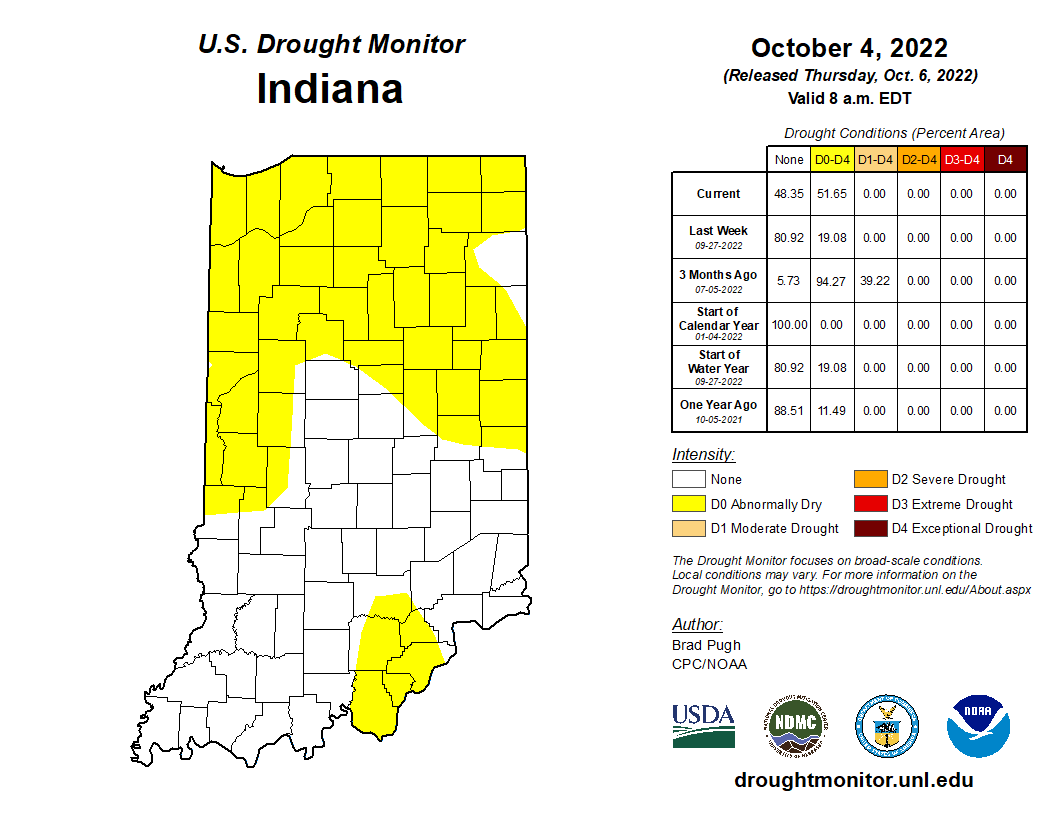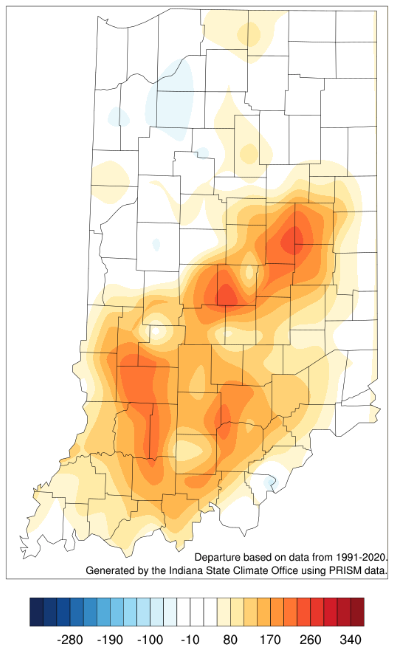As another dry week passes, we are left to wonder when the next significant rain event will occur. The 7-day precipitation forecast is indicating little-to-no precipitation until the end of next week where amounts are still likely to be below half an inch. Climate outlooks beyond this next week is favoring near-normal precipitation – which may not be enough to get most counties out of their current precipitation deficit. Temperatures seem to be wildly transitioning from above normal to below normal at a time of year when evapotranspiration rates are declining. This could help reduce the rate of drought impacts increasing, but Indiana is still likely to see some in the form of burn bans, mild dust storms, low lakes and streams, and stressed vegetation. With farm equipment entering fields, this could bring additional risk for unplanned ignitions.
According to the U. S. Drought Monitor (USDM), abnormally dry (D0) conditions have expanded significantly across northern Indiana with conditions teetering on the edge of needing that classification for more southern counties (Figure 1). Reports have been coming in of dry lawns and soil conditions across the state, so it is likely these USDM classifications will expand or possibly even intensify.
Figures 2 and 3 show the recent accumulated modified growing degree day totals and departures for Indiana since April 15, 2022.





